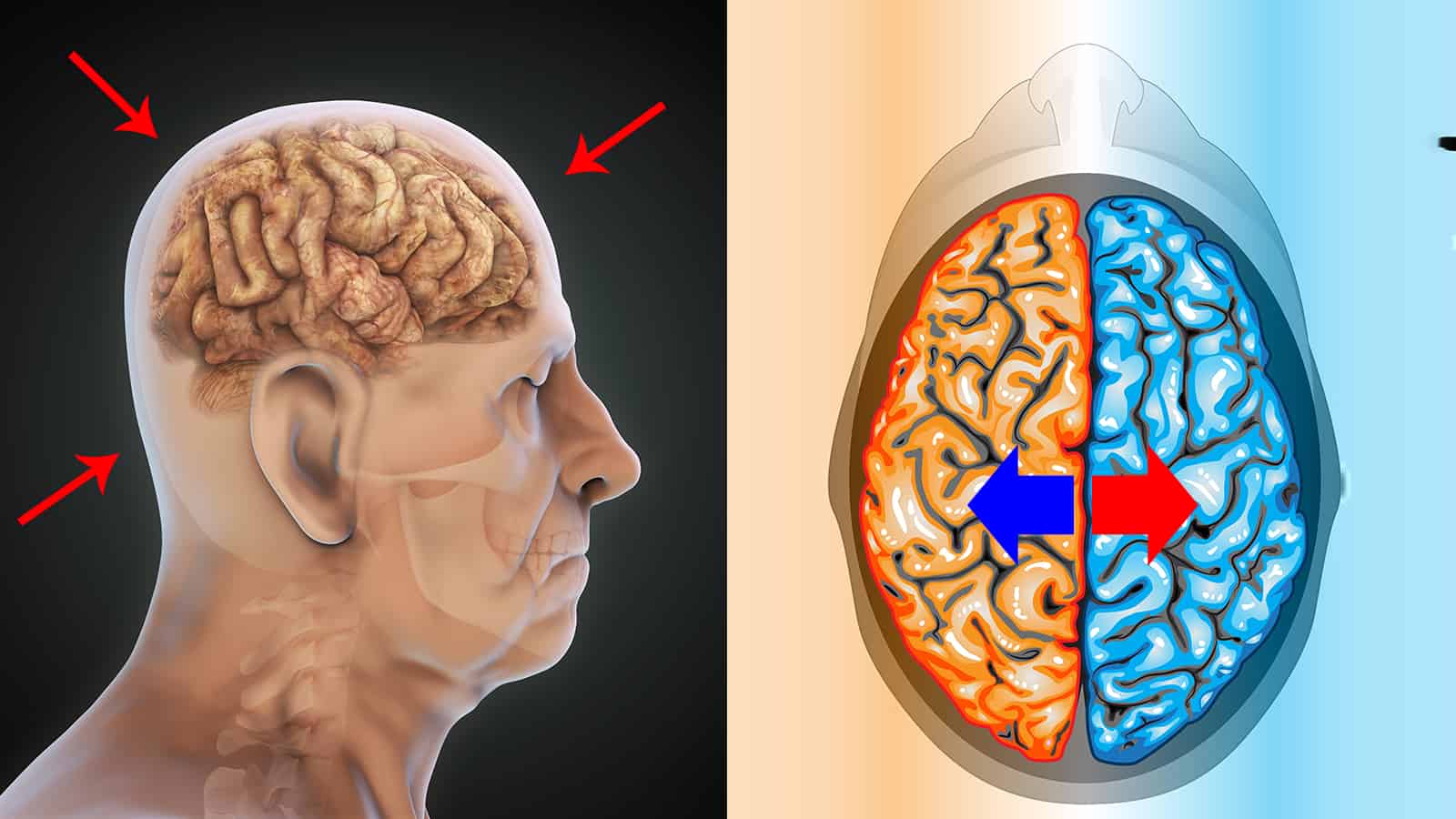You’ve likely heard many things about the brain spoken as fact, but it turns out many of them are untrue. The brain is a confusing part of the body, so it’s essential to separate fact from fiction. Scholars continue to seek answers to many brain myths and questions, and they’ve found some helpful information.
Many of the brain myths come from movies or the media. Luckily, scholars are willing to delve deep to reveal the truth about how the brain works. Once you know what’s true, you can start utilizing your brain to its full capabilities.
The brain has up to 100 billion neurons that control everything about you. They directly contribute to your movements, personality, and thought processes. The brain is powerful, and understanding can help you use it more effectively.
Brain Myths You Should Never Fall For
There is a plethora of information about the brain that was once believed to be accurate. However, much of this information has been disproven or discredited over the years. While some of the myths survive today, don’t find yourself falling for them.
1. You Only Use Ten Percent of Your Brain
A typical brain myth you should never fall for is that you only use 10% of your brain. This idea can’t be accurate, and studying brain imagery is all it takes to know for sure. Brain imagery shows that all parts have a use, and the brain is firing all the time.
Not only is it a brain myth that you use 10% of your brain, but the truth is that you use 90% of your brain most of the time. When you’re awake, most of your brain is being used. Even when you’re just sitting around, if you’re thinking about something, you’re using your mind.
The brain contains more than just neurons, as it also has many other types of cells that are always in use. If only 10% of your brain worked, you wouldn’t function and survive. Some areas might be more active than others sometimes, but all parts are working on some level.
One way to think about this misconception is to consider what your feet do when sitting down. It might not seem like your feet are in use, but they are. There is still blood flowing through them, which is an activity that wouldn’t happen if your brain wasn’t fully working.
Where This Brain Myth Came From
Psychologist William James was quoted in 1907 as saying, “We are making use of only a small part of our possible mental and physical resources.” Later on, he was misquoted as saying that the average person only uses 10% of their brain. Unfortunately, the misinterpreted information spread widely, becoming common knowledge.
2. It’s Important to Pay Attention to Learning Styles
The brain myth that learning styles are essential to think about when learning or teaching isn’t a credible idea. Many people believe that they have one learning style, either kinesthetic, auditory, or visual. They think that they must address each of these when teaching something for the lesson to be effective.
Likewise, people believe they have to tap into their dominant style to learn anything new, too. However, there is no evidence to support that humans specialize in specific learning styles.
Everyone learns in all three styles because their brain processes them all. One study shows that students didn’t perform better when instructed in their preferred learning style.
Where This Brain Myth Came From
In 1992, educational experts Neil Fleming and Colleen Mills introduced the learning style model. They proposed the idea of different styles and developed the VARK model that is often referenced today. The model included four styles, one more than typically discussed today.
The VARK model included the following learning styles:
- Visual: When someone prefers graphics, symbols, and images to learn
- Aural: When someone likes hearing new information
- Read/Write: When someone likes reading and writing as a means to learn
- Kinesthetic: When someone chooses to learn by physically doing the task
3. You Are Either Left-Brained or Right-Brained, But Not Both
The idea that people are either left-brained or right-brained wasn’t based on evidence. It’s a long-known brain myth that people tend to rely on when describing themselves. Everything you know and does comes from memory and emotion within the brain, and it doesn’t depend on either side.
The terms left-brained and right-brained are typically used to identify emotional and logical people. However, everyone is both emotional and logical, depending on the timing and the situation. It has nothing to do with what side of their brain is more vital and instead with the person’s memories.
Studies from psychologists at the University of British Columbia found that creativity doesn’t favor either side of the brain. In the study, researchers found that creative writing activates neural networks all over the brain rather than on only one side. Additionally, other studies support that people don’t use one side of their brain more than the other.
While some aspects of your functioning rely on one side of your brain, it doesn’t mean the other half isn’t working. Speech functions occur on the left side, but it still fires neurons throughout your brain.
Many people believe that only one side of your brain connects to being artistic, mathematical, or psychological. However, those actions occur when your neurons fire across your whole brain. Both sides of your brain are connected, so they function at the same level.
Where This Brain Myth Came From
The myth that you must one or the other came from early studies that separated logic and emotion. In the 1960s, a neuropsychologist, Roger Sperry, cut the brain fibers dividing the two hemispheres of the brain to learn more about it. His experiment targeted those with epilepsy, and he used flashing images into one eye of the patient.
Sperry found that the left side processed verbal information while the right processed visual and spatial. While he never said one side dominated the other, his findings were misinterpreted.
Now That We Debunked Those Brain Myths… How Do You Fully Utilize Your Brain?
Now that you know these brain myths, you’ll want to ensure you don’t waste any of your brain’s capabilities. You can keep your brain operating at peak performance levels by implementing a few ideas.
1 – Get Moving
Studies show that people who walked briskly for one hour twice a week increased brain volume. It improved the areas that control thinking and memory, helping increase brain functioning. Movement helps your brain receive oxygen-rich blood, improving thinking power and stimulating new nerve cells.
People who did strength training or didn’t exercise didn’t receive these same benefits. Focus on cardio and aerobic exercise, and get moving whenever you can. Exercise can also help decrease blood pressure and reduce inflammation, preventing damage to the brain.
2 – Eat a Healthy Diet (Good Nutrition Is Definitely NOT One of the Brain Myths!)
Scholars have linked certain nutrients to maintaining and developing brain health. People who consume more leafy green vegetables performed better on learning and memory tests. The folic acid found in the vegetables could be the factor in the improved performance.
Good nutrition improves blood quality, and your brain survives on blood supply. When you eat healthy foods, it decreases your risk of cognitive decline and memory problems. Some of the other essential nutrients that help brain health include:
- Omega-3 fatty acids
- Vitamin D
- Vitamin B12
3 – Talk to Others
Studies show that social interaction leads to less cognitive decline for people over 50. Staying in touch with your friends and loved ones can help your brain work optimally. Make time to see the people you care about so you can have a healthier mind.
4 – Get Plenty of Sleep
Your brain works at peak functioning levels when you’ve gotten enough sleep. You’ll be more alert and focused as your brain has a chance to rest and recover.
Research proves that sleeping clears your mind and increases the space between brain cells. With the extra space, the toxins that build up during the day get flushed out with cerebrospinal fluid. This process improves brain health and functioning.
5 – Consume Probiotics
When your body gets low on good bacteria, your brain can suffer. Many people know that gut health is a concern, but it takes a toll on your brain health, too. Those who consume probiotics experience an improvement in overall brain functioning.
6 – Keep Learning
Learning something new will drastically improve your brain function. Consider learning to play the piano, as starting lessons can make a huge difference. You can sign up for classes to learn something new or memorize something each day.
Stepping out of your comfort zone to learn something new increases the size and structure of your brain’s neurons. It improves your memory and overall cognitive function.
Final Thoughts on Brain Myths Never to Fall For, According to Scholars
You’ve likely heard all three of these brain myths, but now you know not to fall for them. Both sides of your brain work all of the time, and you can’t only learn from one learning style.
Once you know the truth, you can improve the functioning of your brain. Learn something new, get enough sleep, and focus on improving your health.

















 Community
Community

